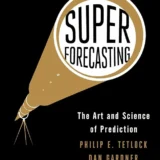
What does an actress have to do with national security and telephones? Hedy Lamarr invented the concept of “frequency hopping,” which later evolved into “spread spectrum” technology, a method used to keep military communication channels secure. Basically, spread spectrum technologies work by hopping swiftly from one frequency to the next. This has enabled several devices, cellular phones among them, to encrypt and pass on information.
Who was Lamarr?
Hedy Lamarr is best known as a popular actress in the 1940s who starred in such films as Samson and Delilah (1947) and Tortilla Flat (1942). Lamarr wasn’t her real name, however–she was encouraged to change it by studio head Louis Mayer, head of MGM Studios. Lamarr had starred in a steamy film in the German film industry, Ecstasy, as Hedy (short for Hedwig) Kiesler. Although he recognized her talent, Mayer wanted to put some distance between Hedy and the controversial film.
A Dangerous Past
But Lamarr hadn’t come to the United States simply to pursue a cinematic dream. She was on the run from her ex-husband, Austrian arms dealer Fritz Mandl. Mandl, also known as “Austria’s Munitions King” and the “Merchant of Death” hailed from a long munition tradition. The Mandls had been dealing weapons for years, flourishing during WWI and later arming both sides of the Spanish Civil War in spite of Fritz’s far right politics. Lamarr was seen as little more than a trophy for her businessman husband and claimed that he gave her “every luxury except freedom.”
She did far more than blend into the scenery in the end. As Mandl’s wife, Lamarr entertained hundreds of prominent dinner guests from Sigmund Freud to Mussolini. (And, she claimed in her autobiography, Adolf Hitler.) While her husband wined and dined these officials throughout the 1930s, Lamarr listened in on conversations discussing military problems. Among the topics discussed were the great difficulty of guiding torpedoes to their targets. It was then that she began to consider how she herself might someday contribute to military science.
The actress began to plot her escape from her overbearing husband and his dangerous associates. Lamarr hired a maid for the physical resemblance that they shared. Dressing as this maid, in early 1937, she gathered up her jewels, a small bag of clothing, and ran to first Paris, then London where she met Louis Mayer and saw a way out through returning to her acting career.
The Idea is Formed
In spite of her rise to American stardom, Lamarr hadn’t given up on the idea of contributing to the war effort. Where many actresses went out in the evenings, Lamarr remained at home, working on her inventions. She wanted to use her mind, rather than her appearance, to make a difference to the war.

In 1940, she tracked down composer George Antheil. Prior to being a musician, Lamarr had learned that he was a government inspector of U.S. Munitions. She shared with him her dream of leaving the movies to join the National Inventors’ Council recently formed in Washington, D.C.. Antheil had sparked an idea in her when she attended one of his concerts where sixteen player pianos performed in unison. Constantly moving notes triggered her concept that radio frequencies could be randomly changed in torpedo navigation system so that the enemy couldn’t jam or intercept the signal. Antheil suggested that they refine the system further by using punched player piano rolls to sync the torpedo receiver with the radio transmitter. A band of eighty-eight frequencies was then created for transmission.
Why eighty-eight? Because that was the number of keys on a piano.
Reception
Lamarr and Antheil’s patent for a “Secret Communication System” was granted in 1942 (patent no. 2,292.387). The United States Navy was less than impressed with the concept, scoffing at the idea of using player piano rolls in torpedoes. Their proposed device seemed too complicated and costly to execute in the 1940s. Lamarr and Antheil forged on, trying to come up with other military inventions. Another invention was an antiaircraft shell that would explode automatically when it hit or came near the plane. This also didn’t gain much traction.
In the 1950s, before the Lamarr-Antheil patent expired, Sylvania Electronics engineers discovered it and used electronic signals to serve the same function as the player piano rolls. This later evolved into the spread spectrum technology that we know today, enjoying its military heyday during the Cold War when the U.S. Navy put it into communications systems placed in ships sent to blockade Cuba.

Neither Lamarr nor Antheil saw little recognition in their own time for this invention. Lamarr was honored in 1997 by the Electronics Frontier Foundation, three years before her death. To the world at large, she is still best known to fans of classic cinema rather than as a creative inventor who dreamed of being recognized for her sharp mind and mathematical ability rather than the films in which she starred.
To Dig Deeper
Both Hedy Lamarr and George Antheil left behind colorful accounts of their cinematic and scientific lives–respectively, Ecstasy and Me: My Life as a Woman (Hedy Lamarr) and Bad Boy of Music (George Antheil). A book focusing more specifically on Lamarr and technology is Spread Spectrum: Hedy Lamarr and the Mobile Phone by Rob Walters.









1 Comment